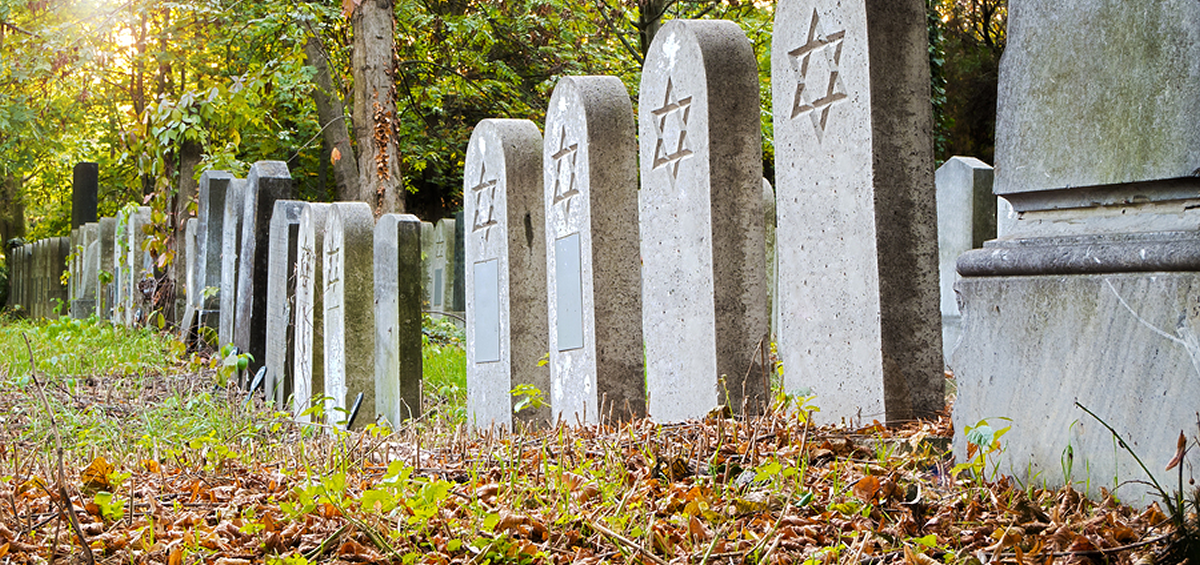I Saw a Grave With My Name on It

This past Monday, I drove from Camp Mesorah to New Jersey to officiate at the Levaya of a dear friend and former member of our BRS West kehillah.
When the funeral concluded, we lined up in cars, with flashing lights, and drove to the Beis HaChaim.
The burial was in a section of the cemetery that I had never been to before, and I followed the cars ahead of me, making my way through generations of Jewish families.
At the final turn, right in front of me was an enormous headstone, with a name I recognize too well.
BLUMENTHAL.
There were no first names, no dates. Just the name; covering two plots.
To the best of my knowledge, I don’t know these Blumenthals and I doubt that we’re related. But it’s jarring to turn a corner and see your own name written on a Kever. More than that, it’s a humbling reality check: One day, that will be me.
For most of us, confronting our own mortality is not a daily activity. Indeed, Chazal don’t recommend it, other than as a last resort to avoid giving into destructive temptations. (See Rav Kook עין איה ברכות ה:א)
But on Shabbos Chazon, as the tragic culmination of the three weeks approaches, we read the Haftara of Chazon, the vision, of Yeshayahu, who saw the burning of the Beis HaMikdash while it was still standing. He saw the Kever of the Yerushalayim while it was still standing tall. It’s a relentless lament, devoid even of the hopeful optimism that is interspersed throughout Eicha.
The Rama (תק”א א) writes that on this Shabbos we should not wear Shabbos clothes. (Our minhag is different (עין באור הגרא שם). We observe this Shabbos with all of our regular practices and comforts.)
It is peculiar however, that many of the Seforim tell us that on Shabbos Chazon every Jew can get a חזון – a vision or glimpse of the Beis HaMikdash of the future. They describe the loftiness of this Shabbos, its unique sanctity, its preciousness and power.
But perhaps these two perspectives are not so distant.
On the Shabbos before Tisha B’av, the Navi invites us to see a world where the Beis HaMikdash hasn’t yet been destroyed. On Shabbos Chazon there is still hope for Klal Yisrael to do Teshuva, for the fires to be extinguished.
There is no comfort in this Haftara, because nothing has happened. Our point of view this is that everything can still be fixed, it can all still be saved. It’s encumbered upon us to make sure that we do so.
Imagine living in a world when the Beis HaMikdash still stood. Imagine the pain and tension and baseless hatred swirling, threatening to topple our capital city, our lives and homes.
If Hashem sent you a vision of the impending destruction, would you not do everything in your power to ensure it would never come to pass?
If you could save the Beis HaMikdash by giving up your life, is there any doubt you would do so willingly? ...And if that’s true, why are we so unwilling to give up our opinions, agendas and egos?
In the deepest way, this Shabbos gives us a glimpse of how we will need to live when the Mikdash is rebuilt. The same Ahavas Yisrael that was needed to prevent its destruction will be just as necessary to maintain it in the future.
But for this Shabbos, don’t think of it as destroyed. Think of it as standing in front of you, with all its power, majesty and beauty. This Shabbos, imagine we’re already there.
The Avoda of Shabbos Chazon is to see the tomb stone with your name on it, and know it’s not yours. This is not the end. It is not over.
Our job right now is to fight the Yetzer Hara of hopelessness. To live in a world that once was; a world that we are working to achieve again soon.